Active Atom Articles
The History of Felt Types and How to Properly Clean Felt
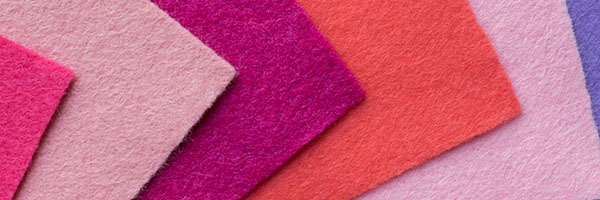
How to buy, clean and make felt rings
Article focuses on the following felt applications:
- Machine Felt Wipes
- Felt Rings
- Precision Machine Spindle Felts
TOPICS
- What do Felt Rings and other Felt Guards used in precision machines and spindles do?
- Louis Levin & Son and there use of wool felt rings.
- How to approach making custom sized felt rings.
- We share a bit of felt history.
- We share which materials felt is made from.
- How is felt made?
- We share how to properly care for the existing wool felt rings during a machine or spindle rebuilding process.
- Who invented the hand wash only wool and knit cleaner, Woolite Delicates?
- Why Woolite was invented.
- When was Woolite invented.
- How the Woolite formula differs from standard laundry detergents.
- What are the main ingredients in Woolite Delicates formula.
What are Machine Tool Felts and What are They Utilized For?
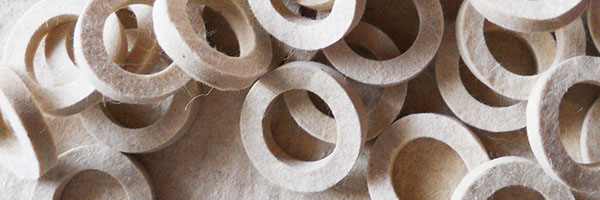
We have identified and there may be others, at least three locations where felt materials are utilized on
precision machines and those three areas are:
- Machine spindle bearing or spindle nose cover and rear spindle bearing and pulley areas.
- Machine axis ways and wipers.
- Lead or ball screw nut and bearing wiper guards.
These felts are placed, often in a groove with a press fit or screw secured outer ring allowing for the removal,
cleaning and replacement as needed over time.
Precision machine felt way wipes, lead and ball screw wipes and spindle rings prevent foreign materials access
to sensitive, very high tolerance, precision machined or ground surface areas and the spindle bearings areas of
a machine.
Felt material made protectors, guard against foreign material such as chips produced by the machine, dust,
grit, oils, coolants, and other abrasive and soiling material each with the ability to begin the slow to fast
destruction of very precision machined areas and ground surfaces.
LOUIS LEVIN & SON INC., Son Named SAMUEL LEVIN
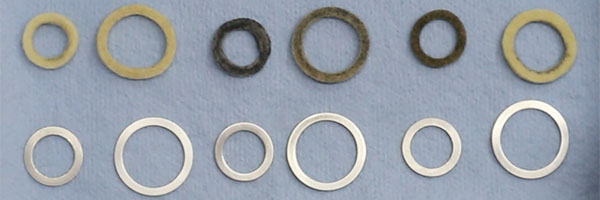
Before we begin here, it is important to mention that for the Levin & Son headstocks and their precision
accessory spindles, the factory no longer uses felts in the spindle assembly line. In fact, the factory also
does not offer these felt rings as replacement parts other then some remaining sizes that may still remain in
inventory for sale.
Contact Levin & Son for available sizes for purchase.
On Levin & Son Spindles, Which Grade of Felt Material is Utilized in their Machine Spindles?
This turned out to be a real tough answer to find, as we set out to seek this answer when we disassembled
another 6 or so Levin spindles for rebuilding. We discovered that the pressed wool felt rings in our machine
spindles are in various colors (grades) and stiffness types.
Active Atom recommends that the felt rings you have in your machine spindles be replaced with new ones if possible.
However, it may require you to custom make hallow punches or cutting dies on a lathe and heat treat them, however
for making a single set of felt rings for your only machine or spindle might not be within your abilities or your
willingness to make the tools and punch these custom sized wool felt spindle rings for a single time.
If you are not able to make the felt rings due to your abilities or lack of equipment for example, then we
recommend to carefully clean and reinstall the existing felt rings, providing you retain them and they are in
good enough condition to be properly cleaned, otherwise making them or doing without them is going to be your
only options.
Felt rings installed in machinery provide an extra level of added security to protect the very expensive and
high precision spindles, machine table ways, machine lead-screws, ball-screws and their nuts commonly used in
precision production machinery.
The History and Importance of Felt
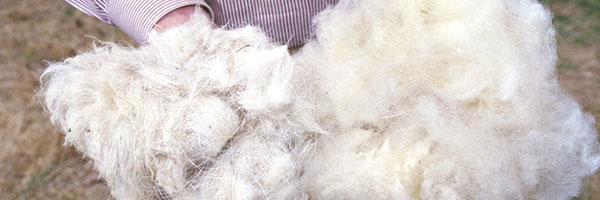
Felt when made from wool, is considered to be one of the world's oldest textiles. Manual wool felt making is
still currently practiced in some of the finest wool producing regions around the globe.
Which materials are used to make felt also referred to as felt making?
- Natural fibers
- Wool or animal fur (Louis Levin & Son Inc. and Active Atom, LLC.)
- Synthetic fibers
- Acrylic
- Acrylonitrile (ac-rylo-ni-trile)
- Wood pulp based rayon
- Blended fibers also are offered
Leading felt material manufacturers have identified 263 confirmed uses in many versions and they cover all
letters of the alphabet except one, the letter 'Z'.
While there are 11 styles of felt material covering 33 specific categories, we are only sharing the use of
one style which is the PRESSED one.
We are working in the machine tool areas and thus utilizing pressed style felt made from wool generally, they
are offered in 12 versions based on these criteria, best matching the precision machine tool requirements.
How is Pressed Felt Made?
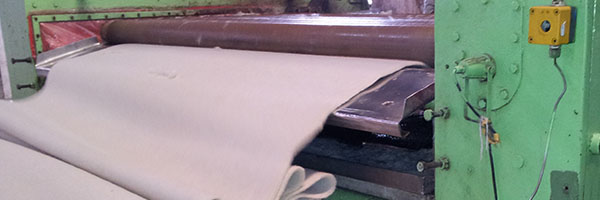
Pressed felt is produced without stitching, weaving or knitting. It is instead fabricated utilizing the
interlocking of fibers which is achieved through mechanical working, chemical action, moisture and heat.
The best in class wool is white, made in the highest grades and being 95% pure wool with a little to no
mixture with other fibers.
How to Properly Clean Pressed Wool Felt
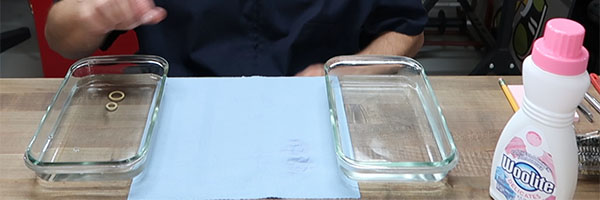
In Part 3 of our
Precision Machine Spindle Rebuilding video series, we demonstrate this felt cleaning process.
We will now focus on the cleaning of precision machine spindle felts, wool felt rings and felt wipes.
Cleaner Type
For the felt cleaning agent, we only recommend the use of Woolite as any other cleaning agents or chemicals
can permanently damage the felt and cause the shape to breakup or become deformed.
Woolite is the first name in the hand cleaning of wool, others have copied, none are known to have improved
this formula for being the best cleaner for wool and knits alike.
Cleaner Selection
Woolite manufacturers 5 versions of Woolite laundry detergent and cleaners, however we are focused on buying
only one the original formula version named Woolite Delicates. Woolite Delicates is a, for hand washing only
product, perfect for this gentile use application.
Here is a list of the items you will need to gather up before beginning this thorough wool felt cleaning
process, a process that will require about 40 to 60 minutes to complete, before starting the overnight natural
drying as the final process before reinstalling the rings the felts back into the machine or spindle.
Gather these 10 items:
- Woolite Delicates 16 ounce bottle
- 1 gallon of distilled water
- 1 roll standard paper towels (mechanics shop blue towels are optional)
- 2 bowls, we utilized clear glass for easier optical viewing during inspection during the cleaning process, also each able to hold 2 cups of warm water with extra space for cleaning and agitating action during the cleaning process.
- 1 - 2 cup size measuring cup
- A stove or hot plate for heating the water
- A pan able to hold more then 2 cups of liquid at a single time
- A pair (optional) of latex gloves
- 1 standard tea spoon, metal or plastic
- Lastly you will need your dirty existing pressed wool felt components from your machine.
Woolite Cleaning Instructions for Felt

We recommend performing these cleaning instructions which involves the heating of the distilled water, nearest
a heating source for heating 2 new cups of distilled water at each cleaning process. There are a total of
three cleaning processes where for each process, distilled water will need to be heated.
Do not share the distilled water between each process as this distilled water is becoming contaminated and
should never be reused.

Step One:
Set up your 2 bowls on a table top apart from one another with a stack (2 layers thick) of paper towels
between them.
Step Two:
Pour 2 cups of distilled water into your measuring cup and then pour that into your heating pan on the heating
source and begin the heating. Heat the water to a below boiling point, yet very warm to the touch, but not
too hot as to restrict you from using your finger once poured into a bowl after heating.
Step :Three
Gently place the wool felt components into this warm water in the bowl. If the felt floats, you can use your
finger to submerge each carefully and allowing each to sink through the water to the bottom of the bowl as we
are seeking the water to thoroughly absorb the water into the interiors of the felt components.
Periodically, gently and lightly agitate the felt using your finger and even flipping the pieces over a few
times for a total of 10 minutes.
Note:
The goal here is to allow the water to be absorbed like a sponge into the full interior depths of each dry
felt component. This will allow for the foreign materials to start loosening, that are likely both internally
and externally impregnated into the felt pieces.
(TIP) While the first 10 minute soaking operation is taking place, slowly heat a new 2 cup batch of distilled
water in the pan on the heating source so it will be warm and ready for the second of three total water
heating operations.
Step Four:
Remove each felt item from the now cooling distilled water. Place each felt item onto the stack of paper
towels you placed on the table in Step 1. You can lightly (with your finger) touch dry each, flipping them
over a few times and repeating the patting dry process. Be carefully though to retain the felts intended
shape as we do not want you to deform these felt components during the cleansing process.
Note:
We are drying the felts while we still wish to have them remain damp. This is to help create a sponge like
effect to prepare for process 2 of 3. Also while we are at it we are removing, only if it occurs some of the
easier foreign materials transferring to these paper towels during the patting dry of the felt component
process.
Step Five:
In the second bowl, now pour the new and now warm distilled water from the pan on the heating source into
that second bowl.
Next, add the Woolite to this second bowl by measuring out using the Woolite Cap 1/4 of the lid full of Woolite
Delicates and agitate utilizing your finger or a spoon (optional) and while wearing latex gloves (optional).
You may notice that the Woolite does not foam like other detergents which is normal.
Note: Woolite is also a very clear formula, you should see no clouding.
(TIP) While we are at it, pour out the water from the first bowl and wiping it clean of any remaining
impurities as it is contaminated with the foreign materials that loosened up from the felt components.
Step Six:
To prepare for the final rinse process 3, measure out 2 final cups of distilled water and pour it into the pan
on the heating source and slowly begin heating it for the next and final cleaning operation for this project,
the rinse cycle.
Step Seven:
Place your damp yet patted dry felt components from the stack of paper towel into the warm distilled water
with the now added Woolite detergent and let sink. If the felt components continue to float, press them down
one at a time into the bowl to allow them to absorb the Woolite and water mixture, and allow these felt
components to remain on the bottom of the bowl.
Tip: As the wool felt gets cycled through in and out of the warm waters, Woolite detergent and paper towels,
they will begin to become more and more buoyant and this is a good thing, they are becoming clean and this
will require you to, using your finger genitally force them to sink into the bowls through each final stage
of the wool felt cleaning procedures.
Step Eight:
The felt components will be in the Woolite and water combination for 15 minute (the longest time of the three
parts process) so periodically agitate the felt components with your fingers, acting like a mini washing
machine but please do so by being gentle as to not allow the felt components to deform.
Periodically flip these felt components and even press down lightly on each with your finger while the felts
remain in the bowl from time to time. This is suggested to insure your efforts are being most effective. Do
this agitating process about 4 or 5 times (or as needed) until they are looking a bit cleaner and stain free
as desired.
Note:
Reminder here you are not seeking a stain free perfection in the appearance in these components, just the
refurbishing of some pressed felt components breathing some fresh life into each of the pressed felt
components for a longer lasting life.
(TIP) Near the end of the 15 minutes, you can prepare by replacing your now wet and dirty stack of paper
towels with a fresh set between the bowls for the final stage of the felt cleaning process.
Step Nine:
Now remove the felt components and place them on your fresh stack of paper towels. Remember that the felt
components still contain the Woolite and distilled water. You do not need to pat these dry as they are
heading into the final rinse process.
Step Ten:
Pour the now warm and final 2 cups of heated distilled water into the cleaned first bowl that was originally
used in Step 1 and place it back on the table across from the now cooling water with the Woolite in it.
Note:
Do not pour out the Woolite and distilled water mixture in the bowl just yet, in case it is possibly needed a
bit more to achieve the best felt cleaning results.
(TIP) You are now done with the heating source, pan and any remaining distilled water from the original 1
gallon container. Turn off the heating source, clean the pan and return it. Also place the extra distilled
water in a safe place (not on a concrete floor).
Step Eleven:
This stage of the process requires 10 minutes time and you might require even more at your own discretion. We
are looking to begin this agitating process of pressing the felt components against the bowls bottom, swirling
them around to create a flow of water which is helping to remove the Woolite and remaining foreign materials
from each felt item.
Now place the felt components into the clean warm pure distilled water. Because these felt components are
full of water and Woolite, they should sink to the bottom of the bowl but if needed, use your finger to gently
force the felt to the bottom of the bowl.
Using your finger, swirl these felt components around in the bowl and lightly pressing them periodically,
allowing the warm water to enter the felt components freely.
Please use caution to not get too aggressive and causing damage or deforming of the felt components during
this agitation process.
Periodically as you see necessary, remove the felt components from the warm water and place them directly on
the stack of paper towels. Allow the water to exit the felt while removing any left over foreign material,
water and Woolite with this action.
It is equally fine to gently press these felt components with your finger onto the stack of paper towels and
helping to remove moisture. Flipping them over is also fine.
Finally, return the felt components to the warm water and sinking them utilizing your finger to allow these
drier felts to absorb fresh clean water and be sunk to the bottom of the bowl as well. Repeat this wetting,
agitation, drying and patting process including the dry flipping process over the remaining 10 minutes or
until they are as clean as you desire or the felt components are capable of achieving.
Step Twelve:
Once you are satisfied, you can for the final time remove these now cleaner and foreign material free wool
felt components from the bowl of now cooling water and gently for the final time, pat dry each felt item while
flipping them and patting them as well on the opposite side on that freshly replaced stack of paper towels.
As usual, be very careful not to cause deformation of the individual components.
Step Thirteen:
Place the now damp yet clean felt components on a new clean paper towel that is located in a warm dry place
for a day or two (based on your environment) allowing them to become completely moisture free. These felt
components are now ready for installation into the machine where they will once again continue to provide a
clean, foreign object collection guard for many more years to come.
Final Step:
Empty the 2 bowls, wash and dry thoroughly, and return them for safe keeping. Discard any used cleaning
supplies.
Store your remaining Woolite Delicates formula container in a dry cool place for the next time it is called
upon for this cleaning process.
WOOLITE SAYS

"Cloths Look New For Longer"
To Prevent the shrinking, stretching or fading of wool, silk, nylon and others.
Who Invented the Woolite Formula?

Harvey S. Hewitt born in Pasadena, California, is a California native and co-invented Woolite when he was
around 36 years of age. Quite young for such a popular product even though he worked with chemists to
formulate the product.
Harvey S. Hewitt died of a massive heart attack at his home in one of Southern California's finest beach
cities of Newport Beach, a community named Corona Del Mar in December 1964.
Why was the Woolite Formula Invented and What is its Main Purpose?

Well the story is shared that Mr. Hewitt's wife Mrs. Jean Hewitt, had complained to Harvey that she had shrunk
a sweater after being washed. Mr. Hewitt being the thoughtful, caring and good listener of his wife's concern,
set out to do something about this issue.
He and a few hired chemists devised a formula for delicately hand washing mainly wool's and knits, and Woolite
was born. The end to high value, often hand made wool and knits shrinking was solved. The product Woolite
was designed to both eliminate shrinkage and make garments look brighter.
Mr. Hewitt started a company named the Honey Harbour Company (HH) also Harvey Hewitt, however a few years
(around 1961 or 1962) before his untimely death, Mr. Hewitt sold the Woolite cleanser to American Home
Products Corporation who later sold it to the current owners.
Mr. Hewitt went on to build a launching and boating, small island development community in Georgian Bay that
he named Honey Harbour or HH.
What Year was Woolite invented?

The Woolite formula was invented around 1951/1953, however the shared stories researched are a bit vague.
What Year was Woolite Globally Trademarked?
Woolite is both a World Mark and a Trade-Mark. The Woolite trade name was filed on May 08, 1956 and legally
registered on January 11, 1957.
Currently these products are produced by R/B Reckitt Benckiser. Woolite once reserved in a single container
like many other brands, has over time re-branded itself as the "Clothes look new for longer" brand.
Woolite is available in the following 5 versions:
- Woolite Everyday
- Woolite Gentle Cycle
- Woolite Darks
- Woolite Delicates (we selected delicate version for this felt cleaning process which is the inventors original and is for hand washing)
- Woolite Baby
How the Woolite formula differs

We selected the hand-wash delicate formula for this felt cleaning process and it is because it does not contain
a main ingredient which is added to nearly all other detergents, except the more current sensitive skin versions
from other major laundry detergent manufactures.
This additive is also one of the toughest and harshest there is and it is only one of two things that occur when
utilizing laundry detergent.
Enzymes
While these naturally occurring and bio-enzymes are harmless to nearly all fabrics, there are two that contain
extra tough stain removal properties that are proven too tough for knit and woolen fabrics.
These enzymes appear in both liquid detergents and powders as small blue flecks or particles.
Hard Water
Water from the home tap is called hard water, meaning it contains chlorine's, magnesium's and other metals so
it is the best practice to utilize soft water or use a water softener system in the main water lines because
hard water is tough on clothing and tough as well on our felt components.
Bleaches / Hydrogen Peroxide / Percarbonate
Many laundry detergents contain bleaches in light or more aggressive volumes.
What are the Main Ingredients in Woolite Delicates?
As specified in the Material Safety Data Sheet:
- Alcohols, C12-16 ethoxylated
- Benzenesulfonic acid, C10-16-alkyl derivatives
- C10-16 alkyl ethers, sodium salts
- Fatty acids, C8-18 and C18-unsatrated
Woolist SDS (Saftely Data Sheet)
